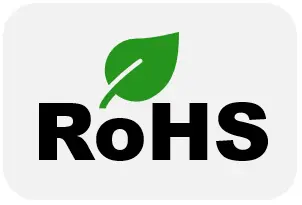
RoHS Certification Testing for Electronic Products
ROHS certification is requiRED for electronic and electrical products exported to the EU market, based on legislation set by the EU. Its fULl name is the "Directive on the Restriction of the Use of Certain Hazardous Substances in Electrical and Electronic Equipment." The directive, effective since February 13, 2003, and implemented on July 1, 2006, aims to regulate the material and process standards for electronic and electrical products, making them safer for human health and the environment.

Major Changes in RoHS Implementation:
1. 2006: The original RoHS standard limited six substances.
2. 2011: RoHS was upgraded to RoHS 2.0, expanding the scope of regulated products and requiring manufacturers of electronic and electrical equipment to issue an EU Declaration of Conformity and label products with the CE mark.
3. 2015: The EU published a revision to RoHS 2.0, adding four more restricted substances, with mandatory compliance by 2019.
Products Requiring RoHS Certification:
- Large household appliances
- Small household appliances
- Information technology and telecommunications equipment
- Consumer products
- Lighting equipment
- Electric tools
- Toys, entertainment, and sports equipment
- Medical devices
- Monitoring and control equipment
- Vending machines, etc.
Current RoHS Restricted Substances:
1. Lead (Pb)
2. Mercury (Hg)
3. Cadmium (Cd)
4. Hexavalent Chromium (CrVI)
5. Polybrominated Biphenyls (PBBs)
6. Polybrominated Diphenyl Ethers (PBDEs)
7. Di(2-ethylhexyl) phthalate (DEHP)
8. Dibutyl phthalate (DBP)
9. Benzyl butyl phthalate (BBP)
10. Diisobutyl phthalate (DIBP)
Email:hello@jjrlab.com
Write your message here and send it to us
 What Certifications for Exporting Monitors to Euro
What Certifications for Exporting Monitors to Euro
 Bluetooth Headphones Exported to Australia Certifi
Bluetooth Headphones Exported to Australia Certifi
 What Certifications for Router Products Exported t
What Certifications for Router Products Exported t
 TIC (Power Bank UL 2056, Portable Power Station UL
TIC (Power Bank UL 2056, Portable Power Station UL
 How to get EN 18031 Certification for Wireless Pro
How to get EN 18031 Certification for Wireless Pro
 PSE, TELEC and VCCI Compliance for Cameras Exporte
PSE, TELEC and VCCI Compliance for Cameras Exporte
 NOM & IFT Compliance for Audio Equipment Expor
NOM & IFT Compliance for Audio Equipment Expor
 FCC, CE & EMC Compliance for Printers Exported
FCC, CE & EMC Compliance for Printers Exported
Leave us a message
24-hour online customer service at any time to respond, so that you worry!




